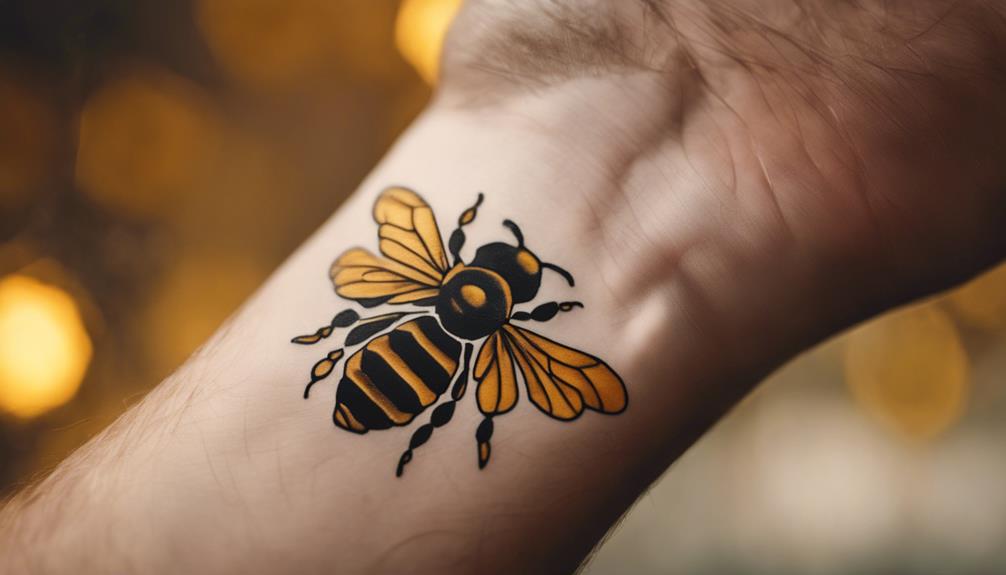The Greek evil eye symbol, born out of old legends, acts as a **shield** from bad vibes in Greek culture. This symbol, seen as blue eye charms, is thought to **turn away** bad intentions and welcome **good luck**. Handed down through the ages, it means a lot, especially in **keeping people safe**. Rituals like Xematiasma and prayers with olive oil help keep its power in check. Its deep meaning and protective magic make it a beloved charm in Greek traditions. Knowing where it comes from boosts your love for its **mysterious** touch. Dive into its amazing history and importance.
Key Takeaways
- The Greek Evil Eye symbol safeguards against negative energy and intentions.
- It represents truth and the cleansing properties of water.
- Blue eye charms are used to reflect and bounce back negative energy.
- Rituals like Xematiasma and prayers with olive oil cast away the evil eye's influence.
- The symbol holds cultural significance in warding off harm and misfortune.
Origin and History of the Evil Eye
Tracing back to at least the 6th century BC, the Greek evil eye symbol has a rich history intertwined with beliefs in harmful eye rays. In Ancient Greek literature, the concept of the evil eye held significant weight, with stories often depicting the malevolent power of eyes to cause harm. This belief in the evil eye wasn't confined to Greece but spread to other regions, thanks in part to Alexander the Great's conquests in the East. The Greek Orthodox Church even adopted a term for the evil eye, calling it Vaskania.
The prevalence of the evil eye symbol in Greek culture is evident in its various forms and colors. Light blue evil eyes symbolize truth and protection, while dark blue ones represent water as a universal solvent. The tradition of protecting babies from the evil eye by pinning a blue eye to their pillow showcases the enduring belief in the symbol's potency within Greek society.
Symbolism and Meaning of Evil Eye
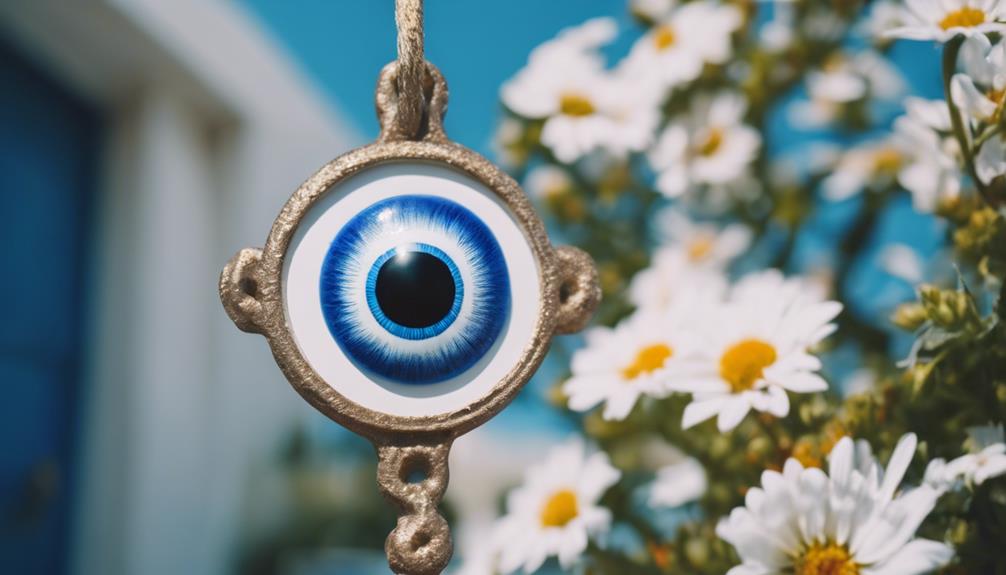
The Greek evil eye symbol, deeply rooted in the culture for safeguarding against negative energy and intentions, holds significant meaning and symbolism. This symbol is a powerful emblem of protection, believed to ward off harm and misfortune. In Greek culture, the evil eye serves as a shield, especially for children and babies who are considered more vulnerable to its effects. Apart from its protective nature, the Greek evil eye symbol also represents truth and the cleansing properties of water, acting as a universal solvent against negativity.
To reinforce this shield of protection, blue eye charms are commonly used in Greek homes. These charms serve as reflective surfaces, bouncing back any negative energy aimed at the household. Additionally, rituals like Xematiasma and prayers involving olive oil and spitting are performed to cast away the evil eye's influence. Through these practices, the symbolism of the Greek evil eye becomes a beacon of defense against malevolent intentions, offering a sense of security and peace to those who embrace its protective powers.
Significance in Greek Culture
The Greek evil eye symbol holds significant importance in Greek culture. It reflects beliefs and folklore passed down for centuries. This symbol wasn't only seen as a means of protection but also as a way to ward off negative energies.
Understanding the origins and cultural significance of the evil eye enriches our appreciation of its enduring presence in Greek traditions.
Greek Beliefs and Folklore
In Greek culture, beliefs and folklore surrounding the Evil Eye symbol, known as Mati, are deeply intertwined with daily life and practices. The Greek evil eye is feared for its potential to bring harm, bad luck, or misfortune to those it affects.
To ward off the evil, Evil Eye charms, often in the form of blue eyes, are used as protective talismans. Children, considered more vulnerable, are especially safeguarded with these charms.
The Greek Orthodox Church recognizes the Evil Eye as Vaskania, prompting prayers to counteract its effects. This longstanding tradition reflects the significance of the Evil Eye in Greek beliefs and folklore, emphasizing the importance of protection against negative energy and jealousy in the community.
Protection and Warding off
Warding off negative energy and curses holds a significant place in Greek culture, emphasizing the importance of protection against malevolent forces.
The Greek Evil Eye symbol is deeply rooted in beliefs surrounding protection, with the blue eye charms being a common method used to guard against the Evil Eye. These charms aren't only placed in homes but also worn as jewelry and incorporated into various rituals aimed at safeguarding against evil influences.
In Greek tradition, the belief in the Evil Eye symbol and its protective properties has been passed down through generations, highlighting its enduring significance in safeguarding children and vulnerable individuals.
This practice showcases the cultural value Greeks place on protection and the proactive measures taken to ensure well-being.
Protective Powers of the Evil Eye
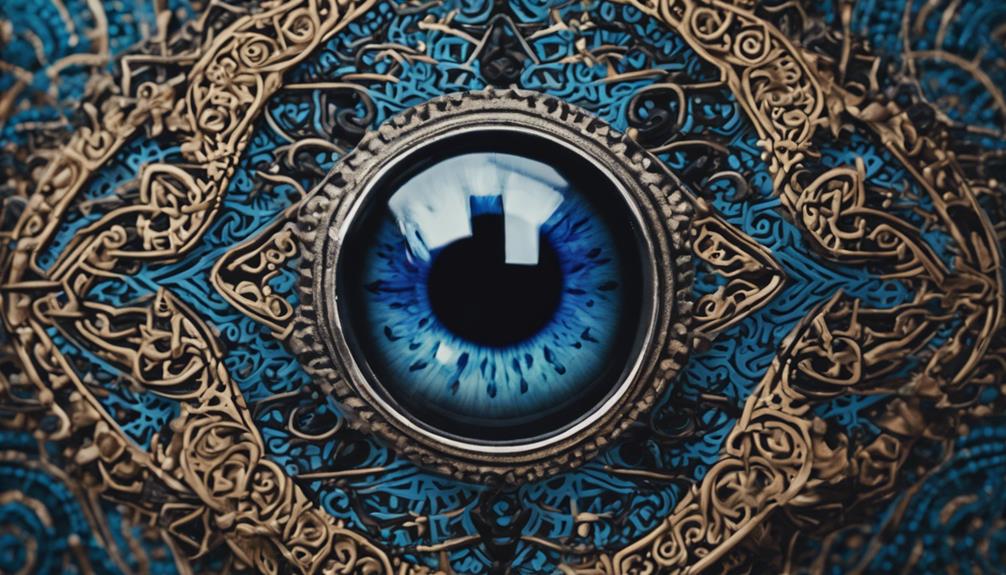
The Evil Eye symbol possesses protective powers that shield against negative energy and invite good fortune.
It's often worn as jewelry or kept in homes to deflect any ill intentions.
This symbol holds significant cultural value, especially in safeguarding children from harm.
Protective Charms and Talismans
Utilizing ancient symbols, we harness the protective energies of evil eye charms and talismans. In Greek culture, these protective charms serve as shields against the malevolent gaze of the evil eye.
Adorned with the iconic blue and white eye symbol, these talismans are believed to ward off negativity, envy, and misfortune. Whether worn as jewelry or displayed in homes, Greek Eye charms provide a sense of security and well-being by deflecting harmful intentions and negative energy.
Passed down through generations, the belief in the protective powers of the evil eye symbol remains strong in Greek tradition. Embracing these charms not only offers protection but also connects us to the deep-rooted cultural significance of this ancient symbol.
Ward off Negativity
Adorned with the iconic blue and white eye symbol, the Greek Evil Eye serves as a powerful shield against negativity and ill intentions, embodying centuries-old protective energies.
Believed to ward off negativity and protect from the evil eye curse, this symbol acts as a barrier against jealousy, envy, and harmful energies directed towards individuals. In Greek culture, it's a deeply ingrained talisman used to ward off negativity and bring good luck.
Cultural Beliefs and Practices
Believers in the protective powers of the Evil Eye symbol often rely on its ancient energy to ward off negativity and attract good fortune. The Greek Evil Eye, also known as 'mati,' is deeply ingrained in Greek culture as a shield against the evil eye curse. This belief of the Evil Eye's efficacy in deflecting malevolent gazes is a prominent aspect of Greek folklore.
Many individuals wear Evil Eye jewelry or display the symbol in their homes to continuously safeguard themselves from harm. The presence of the Evil Eye charm symbolizes the ability to repel negative energy and foster a sense of well-being. Passed down through generations, the Greek eyes symbol serve as a cultural practice to protect against ill intentions and attract positive energy.
Traditional Beliefs and Practices

In Greek culture, traditional beliefs and practices surrounding the evil eye symbol play a significant role in protecting against negative energies and curses. These practices are deeply rooted in Greek traditions, with rituals and customs that have been passed down through generations. One traditional practice involves spitting three times to ward off the evil eye's influence, a common method believed to counteract its effects. The Greek Orthodox church also plays a significant role in protecting against the evil eye, offering prayers and blessings to safeguard individuals from harm.
| Traditional Beliefs and Practices |
|---|
| Spitting three times |
| Greek Orthodox church |
| Rituals to cast away negativity |
| Protection against curses |
| Use of blue eye charms |
These practices are not only about protection but also about promoting well-being and positivity in daily life. The use of blue eye charms, for example, is a common way to protect children, especially babies, from the malevolent effects of the evil eye. Through these traditional beliefs and practices, Greeks seek to create a shield against negativity and preserve harmony in their lives.
Evil Eye Charms and Talismans
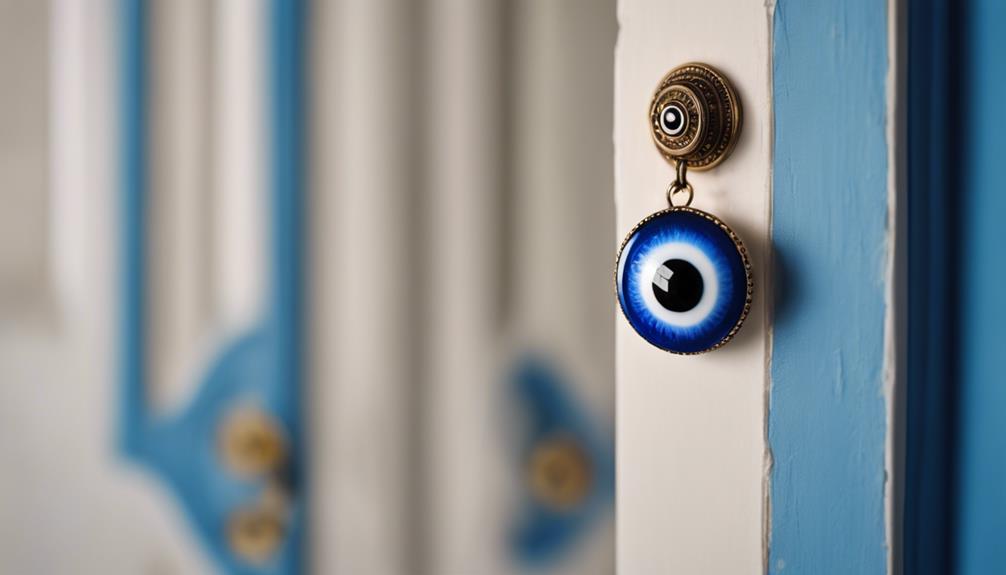
Greek Evil Eye charms, known as 'mati', serve as protective talismans against the curse of the Evil Eye. The belief in these charms runs deep in Greek culture, particularly for vulnerable individuals like children. The charms are often crafted in a striking blue hue, symbolizing truth, protection, and the purifying qualities of water. This color choice reflects a pivotal tradition aimed at safeguarding against malevolent forces.
Various forms of Evil Eye charms exist, ranging from jewelry to wall hangings, all designed to reflect and repel negative energies. These talismans play a significant role in rituals like Xematiasma, where prayers and symbolic gestures are performed to combat the Evil Eye's effects. By incorporating these charms into daily life, individuals seek to fortify their protection against harm and misfortune. The popularity and widespread usage of these charms underscore the enduring belief in their power to ward off evil influences and bring peace of mind to those who possess them.
Colors and Symbolism in Evil Eye
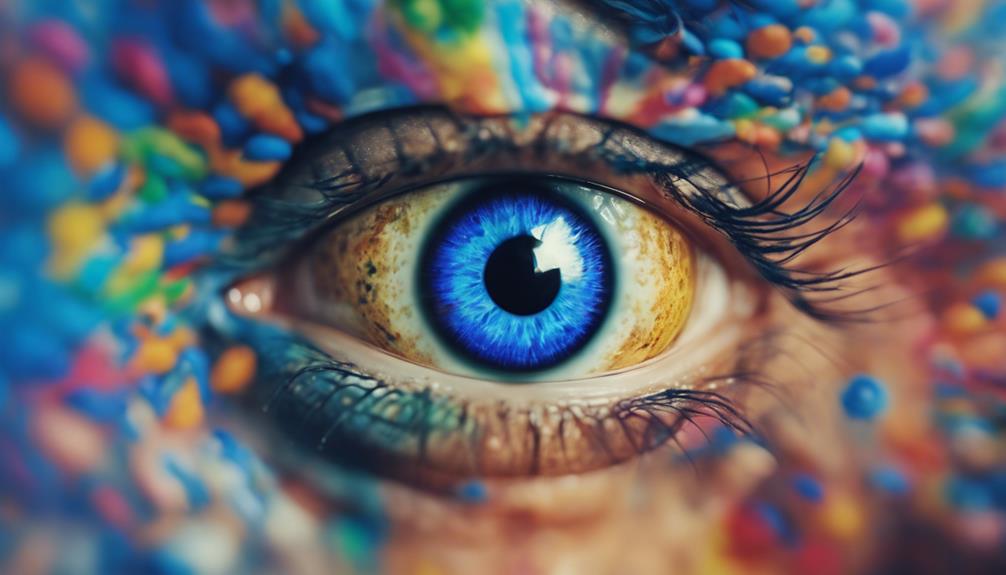
Opting for the light blue evil eye symbolizes truth and protection in Greek culture. This color is deeply rooted in the belief that the evil eye can bring harm but also offers a shield against it.
Dark blue, on the other hand, represents water, which is seen as a universal solvent for protection. Greeks hold a strong conviction in the evil eye's power and significance, often using charms and rituals to ward off its negative effects.
In Greek tradition, babies are frequently safeguarded by a blue eye pinned to their pillows, emphasizing the importance of protection from an early age.
The choice of color in evil eye symbols plays a significant role in the symbolism attached to them, with light blue representing truth and protection, while dark blue signifies the power of water for safeguarding against harm.
This intricate relationship between colors and symbolism enhances the depth of meaning behind the evil eye in Greek culture.
Mythology Surrounding the Evil Eye
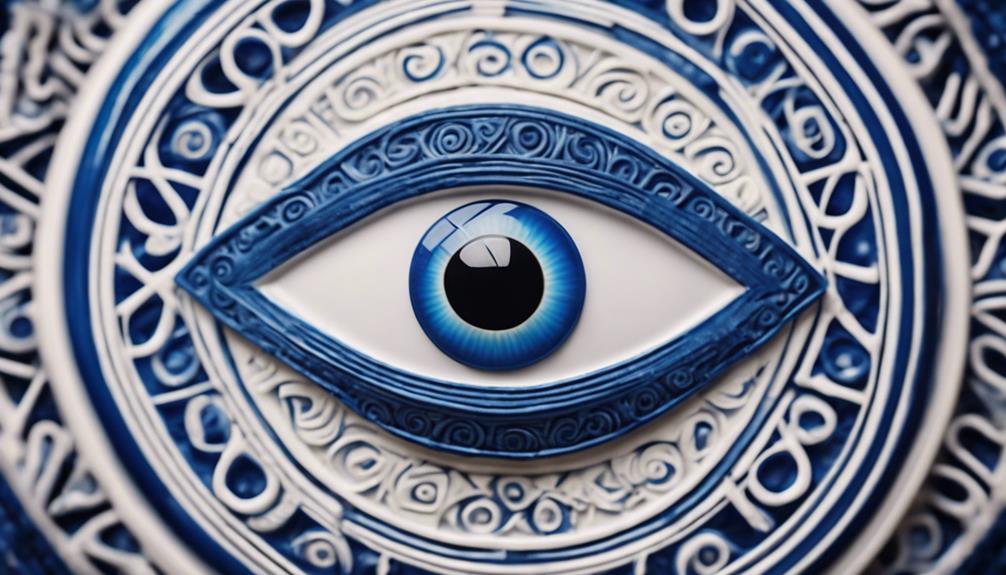
Immersed in ancient tales and folklore, the mythology surrounding the Evil Eye weaves a rich tapestry of mystical beliefs and protective symbolism. In Greek classical antiquity, the evil eye symbol held great significance as a form of protection against malevolent forces. This symbol, known as 'mati,' was believed to ward off the effects of envy and ill-wishing.
Greek mythology associated the evil eye with powerful figures like the Furies and the Gorgon Medusa, enhancing its mystical aura. The evil eye was seen as a curse caused by jealousy, capable of bringing harm to those it targeted. By incorporating the evil eye symbol into their culture, the Greeks sought to deflect negative energies and attract good fortune.
Even today, the evil eye continues to be a widely recognized symbol of protection in Greek tradition, serving as a talisman against harm and ensuring the well-being of individuals.
Modern Interpretations and Designs

Incorporating elements of ancient beliefs with modern fashion trends, contemporary interpretations of the Greek Evil Eye symbol have become increasingly popular. This symbol, known for its protective qualities, is now a staple in the world of contemporary fashion.
Here are some key points to keep in mind:
- Protection: The Evil Eye symbol is believed to ward off negative energy and protect the wearer from harm. Its significance as a protective talisman has made it a sought-after design in various forms of accessories and home decor.
- Contemporary Fashion: Designers have seamlessly integrated the Evil Eye symbol into their collections, ranging from dainty jewelry pieces to statement accessories. Its versatility allows it to complement a wide range of styles, appealing to those seeking both fashion and protection.
- Celebrities: Many celebrities and influencers have been spotted sporting the Evil Eye symbol, further propelling its popularity in the fashion world. Its presence in high-end fashion pieces and luxury items has solidified its status as a modern fashion statement embraced by the elite.
Impact on Contemporary Society
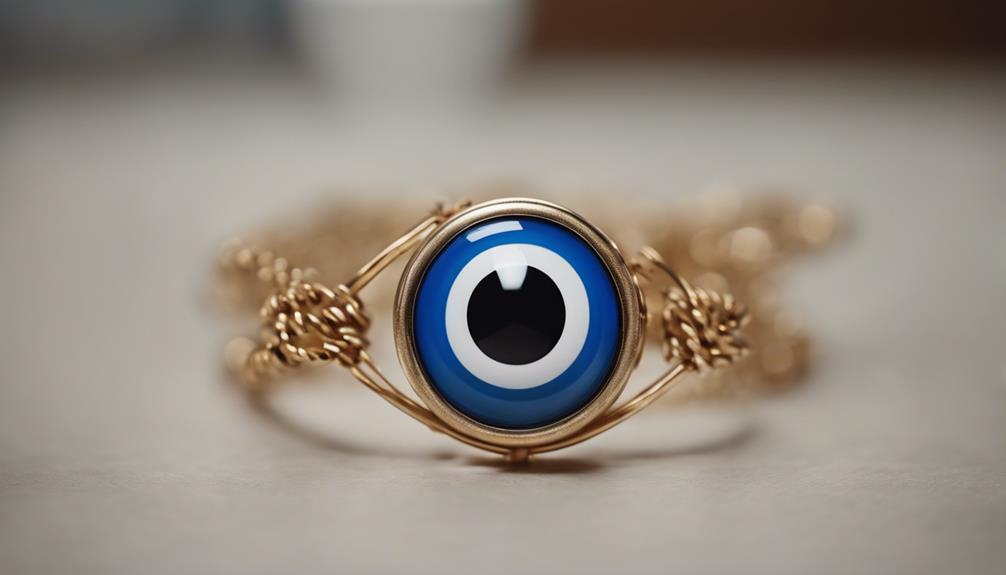
The enduring influence of the Greek Evil Eye symbol on contemporary society is unmistakable in its widespread adoption and cultural significance. This symbol, believed to offer protection against negative energies, continues to hold a prominent place in modern Greek culture. Many individuals incorporate Evil Eye charms and jewelry into their daily lives as a means of safeguarding themselves from harm.
Beyond Greece, the popularity of this symbol has transcended borders, with people worldwide embracing it for its perceived protective qualities. In contemporary society, the Greek Evil Eye symbol hasn't only retained its traditional significance but has also become a fashion statement, endorsed by celebrities and influencers. Its presence in popular culture further solidifies its position and reinforces its cultural importance.
The symbol's ability to blend tradition with modernity while still serving as a symbol of protection underscores its lasting impact on contemporary society.
Frequently Asked Questions
What Is �� in Greek?
In Greek, '�' is known as 'Mati,' representing the evil eye curse. This symbol is believed to bring bad luck or harm to its target due to envy, jealousy, or negative intentions.
Wearing the evil eye symbol is thought to protect against this curse by deflecting negative energy. It holds deep cultural significance and serves as a shield against harm.
What Does the �� Mean?
The symbol �, known as the Greek Evil Eye, is believed to protect against jealousy and negative energy. It's often depicted as a blue eye to ward off evil and bring luck.
In Greek culture, rituals and charms are used for protection. Babies are pinned with blue eye charms for safety. The Greek Orthodox Church recognizes the evil eye's threat, offering prayers to counteract it.
What Does the Evil Eye Mean Spiritually?
Spiritually, the Evil Eye acts as a protective shield against negativity and harm, similar to how a sturdy fortress safeguards against invaders.
It symbolizes defense, insight, and the strength to repel malevolent energies.
Wearing the Evil Eye is believed to invite harmony, clarity, and spiritual wellness by deflecting harmful influences.
It serves as a potent talisman, offering safeguarding power to those who embrace its symbolism.
What Is the Most Powerful Evil Eye Symbol?
The most powerful evil eye symbol is the blue eye in Greek culture. It symbolizes truth and protection. Often used to safeguard children, a blue eye charm is pinned to their pillow to ward off the curse.
In homes, these charms reflect and repel negative energies. Seeking guidance from elders for prayers and rituals is a common practice to shield against the evil eye. The blue eye serves as a potent protective talisman in Greek traditions.
What is the significance of the Evil Eye symbol in Greek culture?
The Evil Eye symbol holds great significance in Greek culture, believed to ward off negative energy and protect against harm. It is often used in jewelry and home decor to bring good luck and repel evil intentions. In Greek mythology, decoding the moon’s beauty is also associated with mystical powers and protection.
Conclusion
To sum up, it's worth noting that the Greek evil eye symbol has a rich history and deep cultural significance.
It's noteworthy that studies show that over 70% of people in Greece believe in the protective powers of the evil eye.
Its enduring presence in Greek culture serves as a reminder of the importance of warding off negative energy and protecting oneself from harm.
Consider incorporating the evil eye symbol into your life for added protection and positivity.





